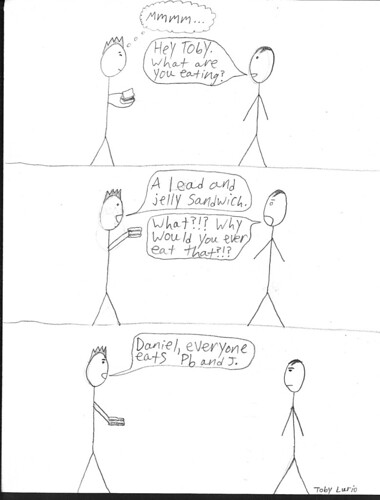Science requires increasingly precise observations and detailed inferences. Observation takes too much time that science must be separated into different specialization. Individuals study matter in chemistry. One way to get a better understanding about matter is that you can carefully observe familiar substances, classify and generalize them on regular bases.
We learnt that few of the ways to identify matter is by their colour and taste. The characteristics of matter can also be recognized by the temperature at which matter changes from a liquid to a gas (boiling point) A mixture is twp or more kinds of matter that have separate identities. (impure) The idea of mixture and pure substance are used to describe matter.
Scatter light will appear if one shines a strong light on impure water and solutions Adding alum and lime to the water, then remove suspended particles from water. The water will not appear to have scattered lights Solutions are mixtures that look uniform throughout and do not scatter light Solutions such as sugar and salt in water are to be separated into their component parts using distillation
New techniques are still being developed in order to meet the environmental problems concerning today’s society. Pure substances have constant boiling point
Characteristics of Pure Substance
· Have a constant boiling point & melting (or freezing) point, unlike most ordinary mixtures
o Ex. As pure methanol is heated, the temperature gradually rises to 65C & begins to boil. The temperature remains constant throughout boiling. However, a mixture of 25% methanol & 75% water boils at around 86C, but the temperature continues to rise as it boils.
Chemical & Physical Changes
· Chemical changes: produce a new kind of matter with different properties
o Ex. When sugar is heated in a test tube, it bubbles & forms a black solid while a colourless liquid forms on the walls of the test tube. The black solid & colourless liquid is both formed from an irreversible process of decomposition that forms new substances with new properties.
· Decomposition: type of chemical change when one kind of matter decomposes decomposes (comes apart), forming at least 2 types of matter.
· Physical changes: no new substances produced
o Ex. Melting, boiling, & freezing are types of physical changes because the substance has all the same properties after a change of state, and the process is reversible.
Compounds & Elements
· Element: pure substances that cannot be decomposed
o Smallest particle: atom
· Compound: chemically combined elements & can be decomposed
o Smallest particle: molecule
p.36-39 Macroscopic observations are observations from what an individual can see, feel or smell. Whereas melting point, boiling point, heat of fusion, temperature and mass are all called macroscopic properties. On the other hand, microscopic model is to explain the performance of matter. Matter is made up of atoms. Atoms are usually expressed as spheres because chemists use spheres to help them
understand the microscopic world. Elements only contain one kind of atom. If the particles in an element vibrate, temperature will increase, therefore, an element can exist as a solid, liquid, or gas. Particles made of more than one atom are called molecules. The more outsized the particle is, the higher the boiling point will be. Energy such as heat and electricity are used to break down compound
Compounds can be formed by molecules or ions. Chemists need to check their conductivity in order to determine rather the compound is ionic or molecular.













